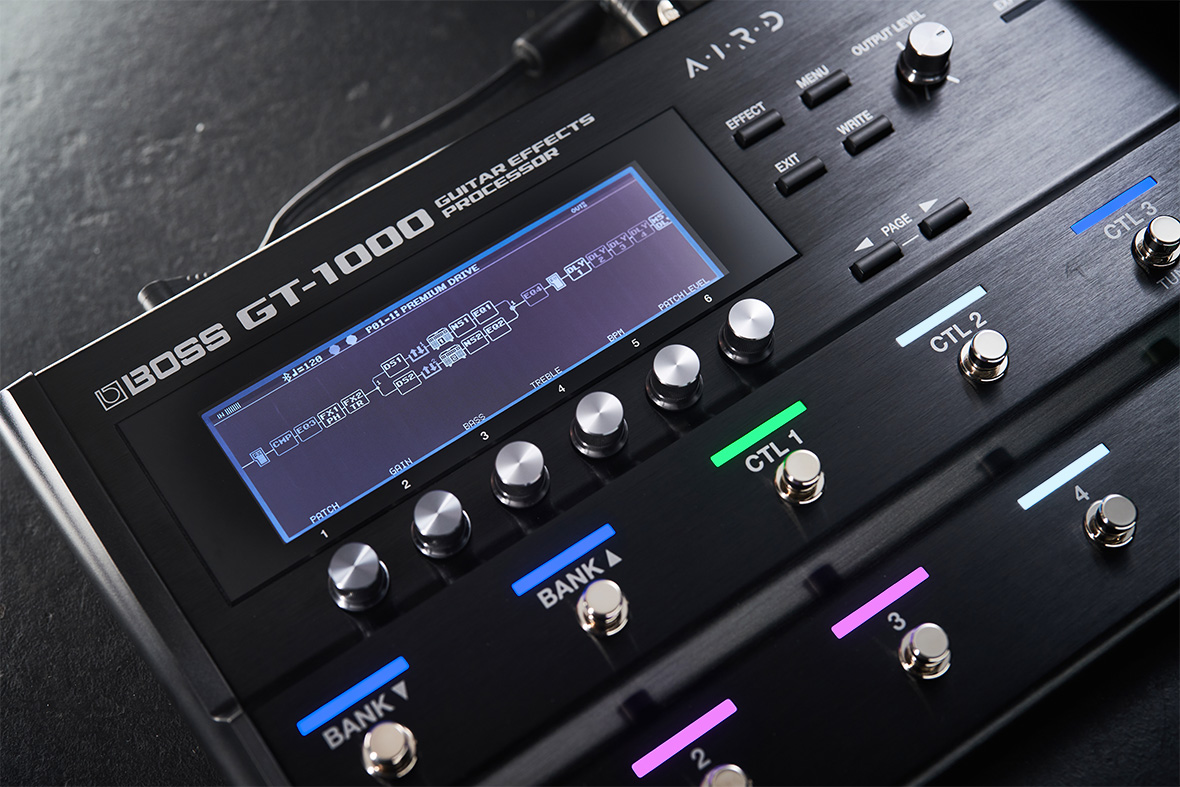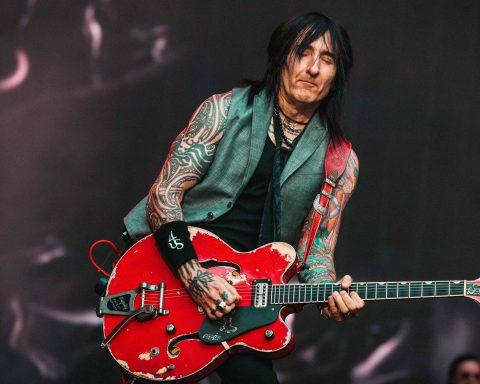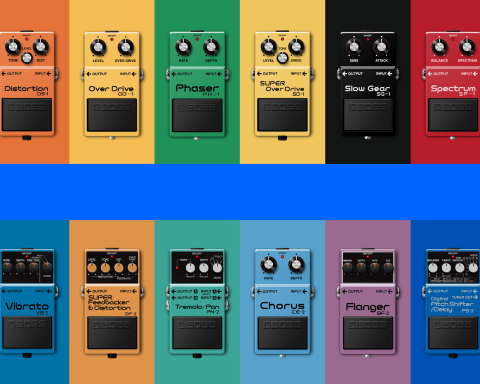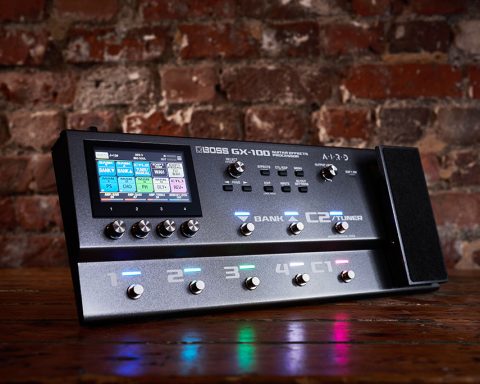The GT series of guitar effects processors offers a complete amplifier and effects solution and has been the BOSS flagship, professional-grade performance and recording tool since 1996. They are characterized by cutting-edge effects and amp simulations, versatile routing options, and powerful and comprehensive editing tools. This extensive guide to the GT range of pedals is for guitarists and bass players looking to explore the potential of the BOSS GT series.
Whether you’re looking for a consistent and versatile system for session work, a hassle-free recording solution, or a professional live performance tool, the GT has evolved into the cutting edge of rich BOSS history in engineering and tone. We’ll cover a brief history of the GT series, information on the range of other BOSS multi-effects and amp simulation processors, the pedal’s key features, and some great insights into the functionality and learning resources available for users to get the most out of their GT series pedal.
What Are Multi-Effects Pedals?
Multi-effects pedals consolidate multiple effect types into a single unit. They often consist of multiple footswitches for individual effect control or the ability to bank between different effects. They allow the user to use different effects individually or together in the same way as a pedalboard of single-effect stompboxes.
There are numerous benefits to using multi-effects instead of individual stompboxes. Multi-effects units are usually a great space saver. Whether used on a pedalboard alongside other effects or as a complete solution, they make travel, storage, and stage use more convenient. They’re also an excellent fly rig solution to avoid traveling with heavyweight, often relatively fragile pedalboards.
"Whether used on a pedalboard alongside other effects or as a complete solution, they make travel, storage, and stage use more convenient."
Another great advantage of multi-effects pedals is their cost. While multi-effects themselves can be an expensive single purchase, when compared to a pedalboard of individual stompboxes, patch cables, power supplies, and the board itself, multi-effects offer an affordable alternative. This can be especially useful for trying effects types that you might only want to use occasionally without having to make an additional purchase.
One of the most rewarding benefits of multi-effects and amplifier simulation processors is their versatility. A modern multi-effects processor usually comprises a massive range of effects, including multiple types of individual impact such as fuzz, delay, or reverb. It also has a comprehensive range of amplifier and cabinet models, allowing the player to effortlessly switch between different unique rigs at the stomp of a footswitch. The range of tonal options encourages expansive soundscape creation and the ability to use a single unit for multiple genres, bands, and scenarios.
Differences Between BOSS GT, GX, and ME Series
BOSS offers three distinct and unique ranges of multi-effects pedals: the GT, GX, and ME series. Each range offers a different core set of features and serves a different purpose within the guitar effects pedal market.
The ME series of pedals are simple tactile multi-effects operated by the large number of control knobs on the face of the unit. It is the most affordable and basic of BOSS’ multi-effects ranges.
The GX series is a modern, touch-screen-operated pedal series designed for fast, easy-to-use effects chain building and control assigning. The range consists of a comprehensive selection of 170 BOSS effects models and a suite of AIRD amplifier and cabinet simulations for a complete recording, practice, and live solution—no amp required.
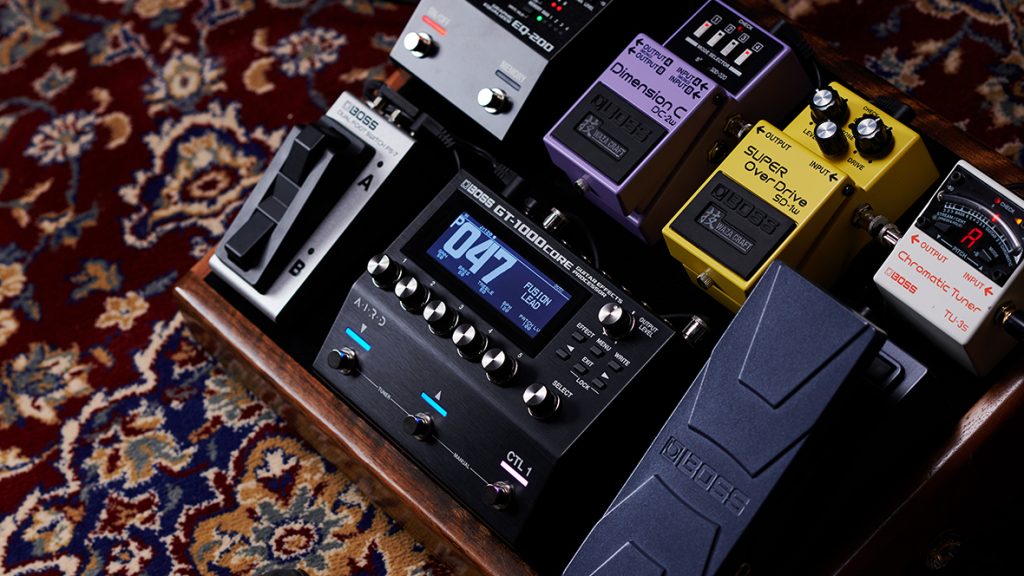
The GT series represents the most comprehensive, professional series of BOSS multi-effects on the market. It consists of a full complement of AIRD amplifier and cabinet simulations and a massive range of BOSS effects. The GT series also boasts impressive versatility of control and editability, enabling players to utilize its MIDI functionality, assign control parameters, and switch in an almost infinite number of ways. Versatile I/O with two stereo outputs and two FX loops also elevates the GT Series connectivity.
"The GT series enables players to utilize its MIDI functionality, assign control parameters, and switch in an almost infinite number of ways."
A Brief History of the BOSS GT Series
The BOSS GT series was first launched in 1996 with the introduction of the GT-5. At the time, the idea of a complete effects and amp sim solution in a single-floor unit was new. The release of GT ushered in a new era of guitar effects processors and advanced the tonal and creative potential of guitarists everywhere.
The GT-5 and GT-3 (released 2 years after the GT-5) combined multiple digital effects and amplifier and cabinet simulations, a pioneering technology at the time. It was the first unit to include the BOSS COSM digital processing technology, and although basic by today’s standards, it offered comprehensive control and detailed tone design and patch building.
The GT-6 in 2001 and GT-8 in 2005 were the first to introduce tactile knob controls in addition to the button-based menu scrolling interface of the GT-5 and GT-3. In addition, the GT-6 and GT-8 also introduced COSM amp modeling and duplicate effects blocks, allowing the player to stack drives or run multiple delays simultaneously.
The GT-10, released in 2008, reduced the number of tactile knob controls in favor of button-based menu scrolling and was the first to introduce a dual parallel chain, dual parallel preamp, USB audio/midi port, and a looper.
In 2012, the series was redesigned again with the industry-leading GT-100. This unit saw an upgrade in the COSM amp modeling and quickly became a popular standard in guitar effects processors. This platform was expanded again in 2014 and 2016 with the GT-001 and GT-1, both smaller units utilizing the same processor and functionality as the GT-100.
All these fantastic and rapidly evolving effects processors have led to the current GT-1000 and GT-1000 CORE. These are the most advanced, creative, and versatile flagship guitar processors BOSS has ever built.
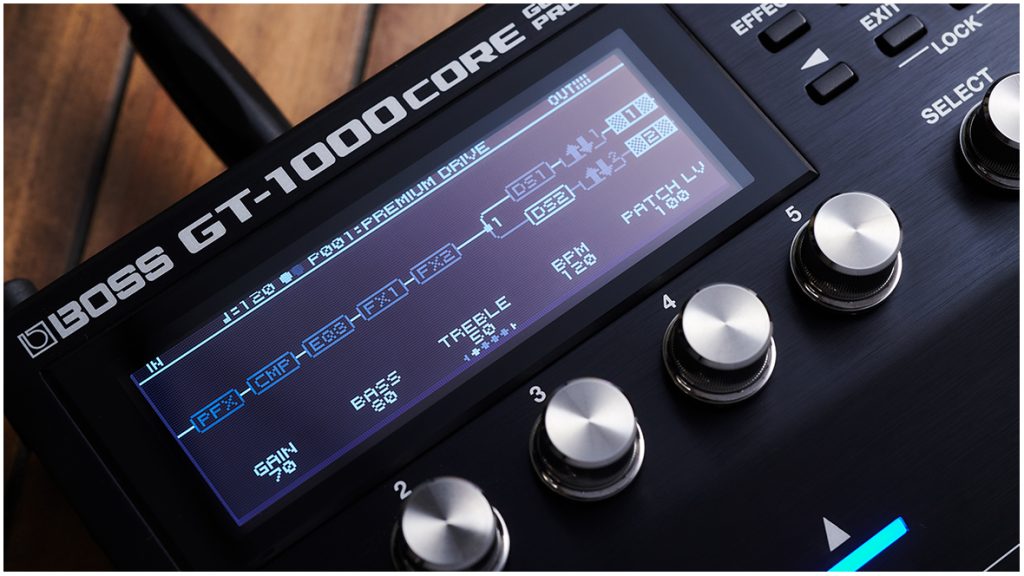
Key Features of the BOSS GT Series
Loaded with the groundbreaking AIRD (Augmented Impulse Response Dynamics) technology, which provides dynamic tube-style tone and response, and realized with decades of BOSS research and class-leading 32-bit/96 kHz processing, the GT-1000 has quickly become a favorite amongst players looking for deep sound editing and customization.
There’s also a huge range of BOSS effects, complete with ultra-flexible routing options and deep real-time control. With built-in Bluetooth, you can tweak settings wirelessly from your mobile device via the dedicated BOSS Tone Studio app, offering an unmatched level of control and on-the-fly convenience.
In addition to GT-1000’s six control knobs, ten footswitches, and integrated expression pedal with user-configurable assignments and LED colors, players can also expand the pedal’s controllability with external footswitches, expression pedals, MIDI, and USB.
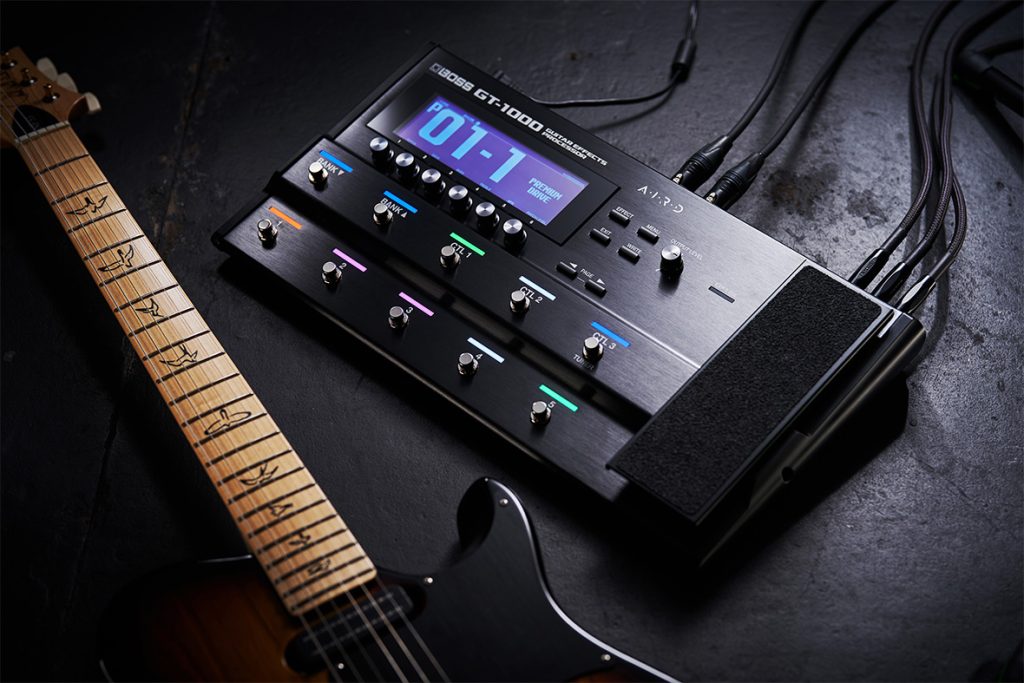
The pedal’s comprehensive range of outputs, including both ¼-inch main outputs and XLR sub outputs allow the player to independently assign different effects, amp and cab sims, and stereo settings simultaneously for complete creative control.
In addition to the GT-1000, the GT-1000 CORE offers the same power, functionality, and flexibility in a compact 3-footswitch unit. It is ideal for players looking to integrate the versatility of effects processing and advanced amp and cab simulation into an existing pedalboard or fly rig.
"The GT-1000 CORE offers the same power, functionality, and flexibility in a compact 3-footswitch unit."
Benefits of Using a BOSS GT Multi-Effects Unit
The BOSS GT series gives players access to the most advanced professional-grade effects, extensively researched and designed amplifier and cabinet simulations, and highly versatile tone shaping and rig customization.
The GT-1000’s deep editing capabilities are industry-leading. Players can create an array of unique rigs, all with complex effects chains, customized footswitch control, and advanced routing options.
A GT unit integrates perfectly with any situation. They can be a simple effects processor used with real-world amplification. A GT can be integrated into an existing pedalboard and even control external amp and effects switching. You can use a GT as a preamp into an active stage cab. A GT can be used as a complete effect, amplifier, and cabinet solution, running straight to front-of-house. They are a powerful studio tool, offering players a massive range of pedals, meticulously designed amps and cabs, and versatile DAW integration.
Regular firmware updates for the GT-1000 series also ensure product longevity. New effects, routing options, and other additions keep the unit at peak performance and at the cutting edge of digital guitar effects solutions.
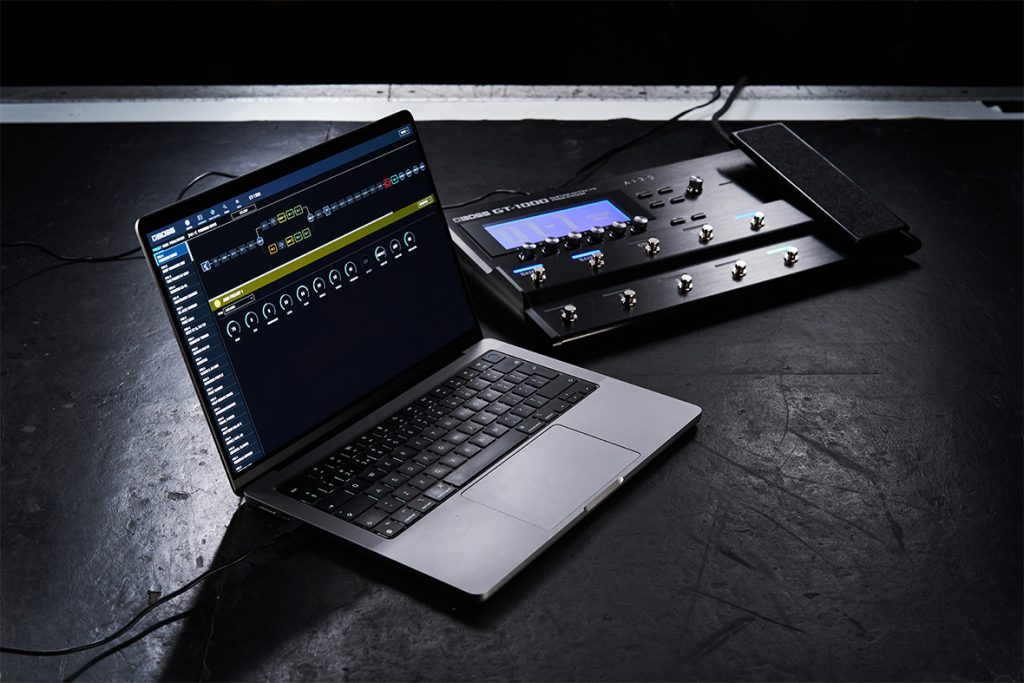
A Tone Tool
BOSS Tone Exchange is another fantastic tool designed to help players expand their creativity with GT pedals. The Tone Exchange is a hub where other GT pedal users can upload their patches for others to try. The vast library of presets is easy to explore either by keyword or popularity and is a great place to look for artist—and genre-inspired patches.
A BOSS GT unit is the perfect tool for players looking to expand their creativity, with a substantial range of effects, amps, and routing options at their feet. It’s also ideal for players who demand versatility from their rig, like session and function players. With a GT, you can instantly switch between a heavily compressed, extremely clean country rig and a high-gain super stack. And they are ideal for the studio and players looking to fine-tune and meticulously sculpt their tone.
"A key feature of the GT-1000 series is its ability to assign different outputs to different scenarios."
Tips for Getting the Best Sound from Your BOSS GT Pedal
A key feature of the GT-1000 series is its ability to assign different outputs to different scenarios. For example, a single patch could simultaneously be tailored to a live and a studio situation. The outputs can be customized to a selection of preset functions. The primary production could be assigned to bypass the cab sim on the effects chain, allowing the GT-1000 to be run directly into a power amp for stage use. Meanwhile, the XLR sub-out could be assigned to carry the cab sim and run straight into an interface and DAW for recording.
It’s also possible to download your impulse responses into the GT-1000, giving the player cabinet and mic combinations to sculpt their tone.
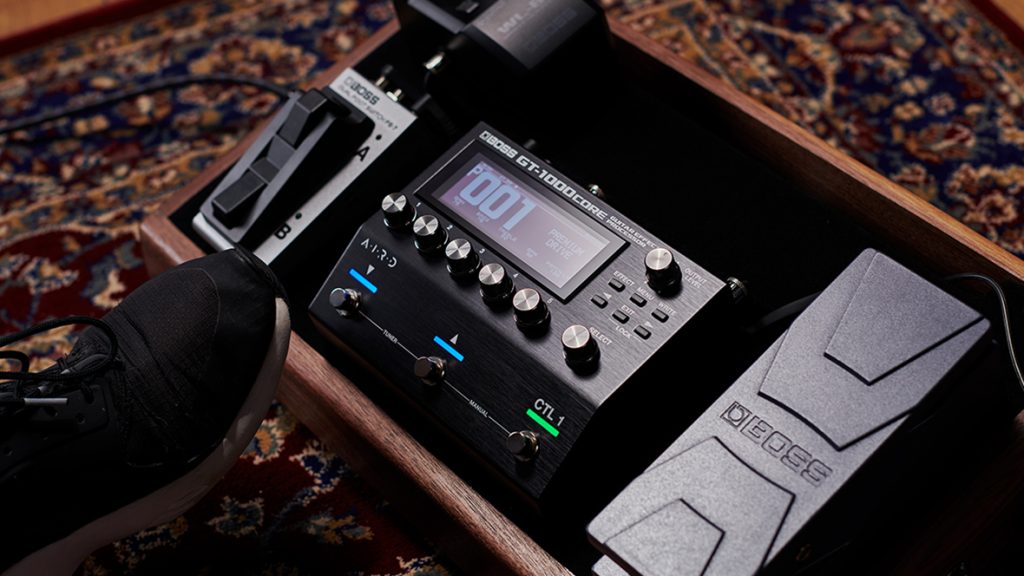
Ideal Settings for Genres and Playing Styles
The GT-1000 is highly customizable and can be shaped specifically for any application. For example, the input stage of the GT-1000 can be set for up to ten different input level settings, which means that you can quickly change the input levels depending on which guitar you’re using. This setting can be done at the overall system level (if you want to change input levels for all your patches at once when you swap guitars) or on a patch basis (if you only use specific patches for certain guitars so that when you change to a patch for your single coil pickup guitar or humbucking pickup guitar, your output levels are already correct).
The GT-1000 can be highly complex and allows for dialing into the absolute minutiae of tonal shaping, but it can also be a simple pedalboard with BOSS’s most significant effects. Manual mode will enable players to access the five closest footswitches and toggle effects on and off like a traditional pedalboard of stompboxes. However, every footswitch on the GT-1000, including those labeled BANK UP/DOWN and CTL1 through CTL3, can be manually assigned to control single or multiple parameters simultaneously.
Also, using the Control Function mode, each footswitch can be assigned to a function as simple or complex as needed. If you want to run your GT-1000 like a virtual pedalboard and assign specific effects to the footswitches instead of patches, you can do so.
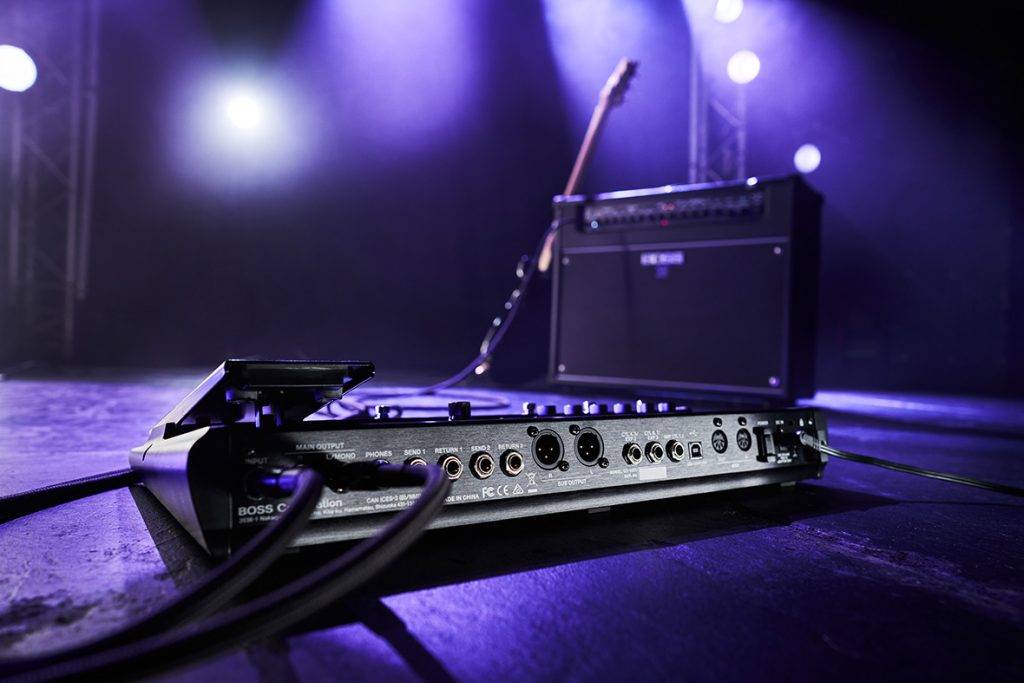
The GT-1000 is capable of highly complex signal routing paths. Up to three parallel chains can be in the signal path, controlled and blended together via several Divider and Mixer points. The Divider and Mixer controls can be used for extremely creative parallel routing.
For example, the player could run two different amp chains, assigning a lighter playing dynamic to one amp and a harder-hitting playing dynamic to the other amp, or run parallel effects routes for more subtle mixes of modulation or expansive ping-ponging delays. These chains can be moved and repositioned like any amp/effects block. So they can be freely repositioned for parallel on parallel signal paths or just out of the way for a simple setup.
"The GT series is truly a one-stop-shop solution for every genre of music, type of player, performance scenario, and recording situation."
A Comprehensive Alternative
The BOSS GT series of guitar processors is the most advanced, professional-grade effects, amplifiers, cabinets, and studio solution BOSS has ever built. They offer an unprecedented level of control and customization. The GT series is truly a one-stop shop solution for every genre of music, type of player, performance scenario, and recording situation.
In one unit, it offers every effect, pedalboard routing, amplifier, cabinet, and studio microphone that a guitarist or producer could possibly need. It is as much an incredible studio tool as it is the ultimate live pedalboard.
Whether you’re looking for a comprehensive pedal alternative, a versatile switching system for function and session performance, an expansive soundscape tool, or a compact recording solution, GT is great. It excels in every genre, from modern metal to ambient shoegaze, and its substantial array of effects and tones will satisfy even the fussiest tone tweaker.
The GT series can help you explore your creative potential, and community-driven tools like the BOSS Tone Exchange are a great way to discover new tones and ways to use the pedal. YouTube is also a fantastic resource for the GT range. Guitar and effects experts like David Webb and Glastonbury headlining artists like Rabea Massaad have created brilliant deep-dive videos exploring just what the GT-1000 can do.
Visit the BOSS GT page for more details and check out the GT library on BOSS Tone Exchange for a great way to get started exploring this expansive series of guitar effects processors.

